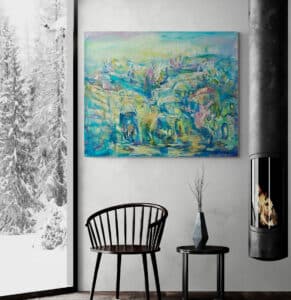
Well, this shouldn’t come as a surprise because the wall is one of the important religious places to the Jews. This article will provide some vital information regarding this great wall.
To hear the entire article for your convenience, click on the player on the left
What is the Western Wall, and why is it important?
The Western walls sometimes referred to as the Wailing wall or the ‘Kotel,’ a Hebrew word describing the wall, are among the remaining Temple Mount walls and the most religious site for Jews.
This famous wall is situated in Jerusalem’s old city. The historical significance of this wall doesn’t stop here, as it’s an essential landmark in Israel’s history. Yearly, the place records so many people who visit for prayers.

The primary reason the wall is vital to Jews is that, even though Romans and Titus destroyed many areas in Jerusalem in 70 CE, they didn’t touch the protective wall surrounding the temple, making it the proximity of the temple and the last remnant of the temple.
It’s added to the fact that it’s the holiest place where the Jews can pray and the most sacred area for Jewish. Since there are restrictions that prevent the Jewish people from entering and praying inside the Temple Mount, the next closest place is the western wall, so they pray there.
Why is Western Wall sacred?
The Jews have their unique culture and traditions; among these cultures is that they usually face the east, towards Jerusalem to pray; one of the reasons for this is that it’s filled with notes and prayers, and above all, it’s sacred.
The Jews believed that even though God is everywhere, His lights shine stringer in specific areas, including the Western Walls; another reason for its sacredness is that it’s the last remaining part of the second temple that was once standing at its grace during the Jewish king’s times. Hence, they believed God had chosen the place by himself.
Initially, the temple was established by Solomon on Mount Morich, but in 587, it was destroyed by the Babylonians. Fortunately, it was reconstructed again but was destroyed by Rome in 70 CE. For over 2,000 years, the Western Walls remain a gracefully praying place for the Jewish people.
The wall is about 160 feet long and 60 feet high, although it’s more profound into the earth. Since the Byzantine period, Jewish people have been devoted to this wall, constantly reaffirming their belief by saying, “the divine Presence never departs from the Western Wall.” “the divine Presence never leaves the Western Wall.”
What is the meaning of the Western Wall?
The exact meaning of the wall is that it’s a place of worship for the Jewish people, and many traditions, histories, and archeological research have long confirmed its authenticity. It’s an old wall that dates back to the second century, although the upper part was recently added.
So whichever reason is that a wall is an important place for not only the Jews but also people from other religions. In addition, the fact that the wall holds incredible power among the Jewish people.
Why do Jews go to the Western Wall?
Many Jews visit the western wall for many reasons, some for prayers, others for sightseeing. Aside from Jews, people from other religions, such as Islam, Hindus, and many more, visit the Western Wall from time to time. It’s among the holiest destinations in Jerusalem and is also believed to be where Abraham bound Isaac.

To view or entier collection of Jerusalem Paintings
Additionally, they perceive the wall as a metaphor for the Jewish people’s survival because, for a long time, their existence has experienced many dangers, including the wall.
When the Romans burned everywhere, they excluded the outer wall, meaning the wall survived and existed just like the Jews. This connection made them feel the wall to the most emotionally powerful religious place in Jerusalem.
Thousands of people offer their prayers on the wall daily; another significant aspect is how they exhibit their emotions while praying, leaving onlookers in awe.
Furthermore, the Jewish hold many prophecies within themselves. One of them said that the Holy Temple would be rebuilt to its form and stand upon the Temple Mount with the wall surrounding it.
The other prophecy is connected to the coming of the Messiah; some Jewish people attest that the power that can cause the reconstruction of the Temple will only come from the true Messiah.
To view the entire collection Western Wall Kotel Paintings
Why do you walk backward from the Western Wall?
If you have been to the Western Wall or have seen a video or picture of it, chances are you have come across people walking back from the wall.
Additionally, while approaching the wall, visitors will see stone sinks with many fixtures and plastic water containers to cleanse themselves before reaching the border. Once you close the wall, you will be welcomed by numerous sobbing and wailing, which marks its name ‘the wailing wall.’
Once you are done praying, you are expected to walkway backward from the walls. This tradition has many reasons; the important ones include it’s disrespectful to turn your back on the wall, believing that turning away from the wall is as if you are turning your back, and prayers from God.
Why do Jews Rock when they pray?

According to Jewish law, Rabbi Moshe Isserlis’s words were written in his Code of Jewish Law. The Jews are punctilious while praying, and they rock back and forth because the Giving of Torah was done while trembling, and it’s written in it that “The people saw and shuddered”
Furthermore, the Rabbi also wrote that the swaying is customary, as described by this verse “All my bones (entire being) shall say, O Lord, who is like you?
Also, Torah scholars usually spend their day in one place praying and learning, so they usually rock forth and back to get some exercise.
The Baal Shem Tov, regarding the swaying, explained that, just like how when someone is drowning in water, people would think he is trying to save himself when they see him floundering, the Jews move to and fro while praying to eliminate all foreign thoughts from their mind and fully concentrate on their God.
To view the entire collection Western Wall Kotel Paintings
Simply put, the Jewish people put their whole selves through prayer, including their heart, mind, and body, so while the mouth is saying the prayers, the other part of the body will join through moving, involving every aspect of their body in the devotion to connecting fully to their creator.
Why was the Western Wall not destroyed?
Solomon built the Temple Mount, but it was later destroyed by the Romans, leaving only the wall standing.
There are many reasons believed to be why the wall was not destroyed, one of them was that the wall was too massive for the Romans to destroy, so they buried it.
Another reason says the wall is a fragment saved by God for the Jews, and another reported that Titus left the wall to remind people of the painful defeat the Judea suffered at the hands of the Romans.
Conclusion
In summary, The Western Wall is among the most critical praying areas for the Jews due to numerous reasons, including it being the last remnant of the original fence that surrounds the second temple. Due to the entrance restrictions, the Jews could only pray in the wall, which is why you often see papers with prayers in the wall cracks.
To view all our Jewish paintings













